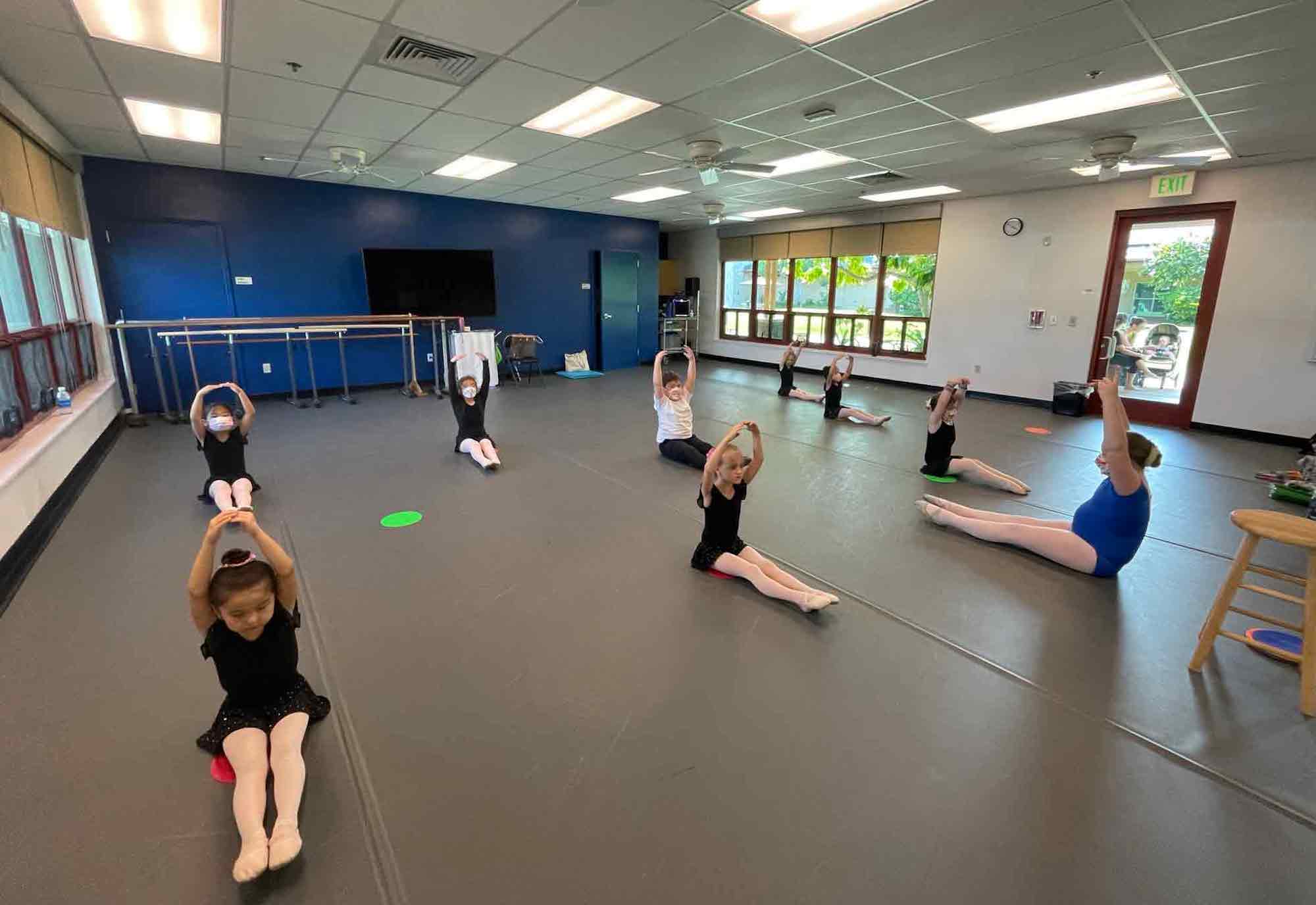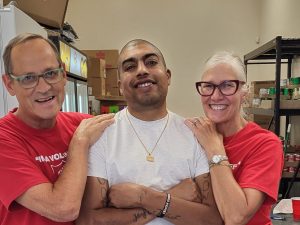It’s a Friday night at the Kroc Dance Academy (KDA) in Kapolei, Hawaii. A sea of ballerinas dressed in black and lavender leotards groan as instructor and founder Alecia Hardt announces the next part of their practice, allegro—fast.
“It’s a Friday night brain teaser,” Artistic Director Sadi Richard said as the dancers move across the room in groups at The Salvation Army Ray and Joan Kroc Corps Community Center. For many, they’ve practiced between 12-20 hours this week. They’re tired, but determined. They’ve worked hard to reach the upper levels of KDA, Hardt said.
And the effort speaks for itself. The dancers have won countless awards, and Hardt said some have been admitted into elite ballet intensives in places including Joffrey Ballet in Italy, as well as others in New York and Chicago.
While those kinds of successes are part of what Hardt aims for, she’s quick to point out the character of her students, calling them humble, smart and kind. It’s in that spirit Hardt and the rest of the teachers at KDA aim to develop dancers of all abilities and help them reach their potential.
While the Kroc Center has been a fixture of the Kapolei community for 10 years, KDA is a relative newcomer, having moved to the Kroc Center in January 2019.
Prior to that time, Hardt and KDA instructor Carolyn Nixon were teaching 44 kids out of a storage unit because the studio they had been instructing at shuttered. After several months of dancing in the heat, a parent asked if they had ever considered the Kroc Center.
Hardt met with the then-Corps Officers, Lt. Colonels Debbie and Phil Lum, who are now the Territorial Secretary for Program and Assistant Program Secretary for Corps Ministries, respectively, as well as Kroc and Workforce Development Director Steve Bireley, who helped green light the program’s move to the Kroc Center in January 2019. Hardt said from the storage unit, the program grew to more than 150 kids within its first seven months at the Kroc Center, prior to the pandemic.
“Our family, our ohana, are unlike any other that I’ve ever worked with in my 40 years of dance. And they needed a special place,” Hardt said. “Kroc Center offered all of professionalism, and I was able to show them what we could do in terms of technical programs, in terms of being a solid foundation for kids to grow, and also what it meant to be ohana to us and how we treat our students differently…We accommodate things that typically the dance industry does not accommodate.”
That means people of all ages and abilities are encouraged to participate. In the Friday night class, the program’s oldest dancer, 47, participates alongside her daughter. Throughout the levels, Hardt and teachers include dancers with disabilities—and help them thrive.
“We have to not just accommodate kids, but be proactive about helping them develop,” Hardt said. “We’re going to tailor classes so that kids succeed. And depending on the diagnosis the kid has, there are a million different ways you’ve got to do that. But my ballet department will always accommodate and help kids succeed.”
For Hardt, the effort is personal. As a mother to a one of KDA’s highest level dancers who has autism, she knows how challenging it can be for parents to find a studio that will accommodate their children with disabilities.
“I’ve spent 14 years with my own child, working with behaviorists and sign language and a lot of neurologists on movement disorders, and so we’re sort of this unicorn,” she said. “You give me a kiddo, and I’m going to find a way to make it work for them because that’s what my kid needed.”
Sometimes Hardt said this could look like pushing a wheelchair or educating the class on epilepsy awareness. Hardt said she’s worked with kids who are overstimulated to teach them how to advocate for themselves, like giving a signal to turn down the music. In the end, the whole class benefits.
“It’s not just helping the special needs children, but also opening this reality to other kids so that they know how to be accepting,” said Assistant Director for Program Rickie Tan. “But it doesn’t mean that in the end that you’re not going to be able to dance together on stage.”

Christine Andritsch first found Hardt through her former studio when she was searching for a place for her daughter, who was then around age four, and having trouble focusing due to ADHD and autism. Hardt was featured on the studio’s website, along with her story of her daughter, and Andritsch thought, “she is probably going to be understanding.”
When the studio closed, Andritsch said they followed Hardt to KDA, where her daughter danced until their family moved away due to being in the military.
“My daughter, she is a hard worker…dance is so good for her,” she said. “It’s really good for development, and there’s something about music and movement. It makes her focus and have to think about directions and timing and counting, and where she’s at in her body and space and time.”
Andritsch said her daughter was offered a competitive spot when she was about six years old, and she performed a solo in the Spotlight Dance Cup that Hardt choreographed for her based on her interests.
“She learned a lot from that and grew a lot, and she actually won an award,” Andritsch said. “It’s just nice that everybody has an opportunity as long as you’re willing to do the work.”
She said there are still people they miss from KDA because of all the time spent together. The community element is something Kroc Center Corps Officer Major Osei Stewart has noticed, too.
“Kroc Dance Academy (KDA) is one of the many flagship programs that bring families together. Each week, when the kids come together to practice and learn, our courtyard is filled with waiting parents who have now become lifelong friends—a community is being developed right in our courtyard,” said Stewart.
“It is a wonderful sight to see the young ladies rehearsing each week knowing their hard work makes them the champions they are. KDA is building teamwork, confidence, perseverance and endurance in these young people which will help build their character and take them well into life.”
It’s that endurance that helps the dancers through their Friday evening class, moving through different routines as Hardt pushes them to be their best, calling out modifications that need to be made in a lighthearted way.
“We are ooey-gooey pizza not Burger King,” Hardt said, comparing the need to lengthen their leg and arm movements to stretchy cheese.
When it’s time to rehearse a lyrical dance Richard choreographed to Sia’s “Snowman,” it is a welcome reprieve. Cheers erupt from around the room.
Like many in the class, Richard is connected to the military; her husband is in the Navy. The often transient lifestyle is a reality they share.
“These kids are my kids,” she said. “I love them so much. It’s going to kill me to potentially leave them.”
But for now, she said, KDA is home for both her and the students. Most of the upper level students will be back tomorrow to dance during the weekend. It is a lifestyle, after all.
Do Good:
- You’ve probably seen the red kettles and thrift stores, and while we’re rightfully well known for both…The Salvation Army is so much more than red kettles and thrift stores. So who are we? What do we do? Where? Right this way for Salvation Army 101.
- Get support from moms who are right there with you. Join the Caring Moms Collective and find a place of low-pressure, high-encouragement love anytime you need it, whether you know it or not. Get in the group today.
- Learn about The Salvation Army’s adaptive camp near the Rocky Mountains.












